- Home
- Robin Cook
Coma Page 2
Coma Read online
Page 2
Like a 747 pilot, he had made himself a checklist, and religiously he adhered to a policy of checking off each step of the induction procedure. This meant having Xeroxed off a thousand of the checklists and bringing a copy along with the other equipment at the start of each operation. By 7:15, the anesthesiologist was right on schedule at step number 12: that meant hooking up the rubber scubalike tubing to the machine. One end went into the ventilating bag, whose four- to five-liter capacity afforded him an opportunity to inflate forcibly the patient’s lungs at any time during the procedure. The other end went to the soda-lime canister in which the patient’s expired carbon dioxide would be absorbed. Step number 13 on his list was to make sure the unidirectional check valves in the breathing lines were lined up in the right direction. Step number 14 was to connect the anesthesia machine to the compressed air, nitrous oxide, and oxygen sources on the wall of the OR room. The anesthesia machine had emergency oxygen cylinders hanging from the side, and Dr. Billing checked the gauge pressures on both cylinders. They were fully charged. Dr. Billing felt fine.
“I’m going to place some electrodes on your chest so we can monitor your heart,” said Gloria D’Mateo while pulling down the sheet and pulling up the hospital gown, exposing Nancy’s midriff to the sterile air. The gown just barely covered Nancy’s nipples. “This will feel cold for a sec,” added Gloria D’Mateo as she squeezed a bit of colorless jelly onto three locations on Nancy’s exposed lower chest.
Nancy wanted to say something, but she couldn’t deal rapidly enough with her ambivalent attitudes about what she was experiencing. She was grateful, because it was going to help her, or so she had been assured; she was furious because she felt so exposed, literally and figuratively.
“You’re going to feel a little stick now,” said Dr. Billing, slapping the back of Nancy’s left hand to make the veins stand out. He had placed a piece of rubber tubing tightly around Nancy’s wrist, and she could feel her heart beat in the tips of her fingers. It was all happening too fast for Nancy to assimilate.
“Good morning, Miss Greenly,” said an ebullient Dr. Major as he whisked through the OR door. “I hope you had a good night’s sleep. We’ll get this affair over with in a few minutes and have you back to your bed for a restful sleep.”
Before Nancy could respond, the nerves from the tissues on the back of her hand became alive with urgent messages for her pain center. After the initial thrust, the intensity of the pain increased to a point and then dissipated. The snug rubber tourniquet disappeared, and blood surged into Nancy’s hand. She felt tears well up from within her head.
“I.V.,” said Dr. Billing to no one, as he made a black check next to number 16 on his list.
“You’ll be going to sleep shortly, Nancy,” continued Dr. Major. “Isn’t that right, Dr. Billing? Nancy, you’re a lucky girl today. Dr. Billing is number one.” Dr. Major called all his patients girls no matter what age they were. It was one of those condescending mannerisms he had adopted unquestioningly from his older partner.
“That’s correct,” said Dr. Billing, placing a rubber face mask on the anesthesia tubing. “Number eight tube, Gloria, please. And you, Dr. Major, can scrub; we’ll be ready at seven-thirty sharp.”
“OK,” said Dr. Major, heading for the door. Pausing, he turned to Ruth Jenkins, who was setting up the Mayo stand with instruments. “I want my own dilators and curettes, Ruth. Last time you gave me that medieval rubbish that belongs to the house.” He was gone before the nurse could answer.
Somewhere behind her, Nancy could hear the sonarlike beep of the cardiac monitor. It was her own heart rhythm resounding in the room.
“All right, Nancy,” said Gloria. “I want you to slide down the table a bit and put your legs up here in the stirrups.” Gloria grasped Nancy’s legs in turn under the knees and lifted them up into the stainless steel stirrups. The sheet slid between Nancy’s legs, exposing them from mid-thigh down. The lower part of the table fell away, and the sheet slid to the floor. Nancy closed her eyes and tried not to picture herself spread-eagled on the table. Gloria picked up the sheet and haphazardly put it on Nancy’s abdomen so that it draped between her legs, covering her bloodied and recently shaved perineum.
Nancy wanted to be calm, but she was getting more and more anxious. She wanted to be grateful, but the tide was swinging more and more in the direction of undirected anger and emotion.
“I’m not sure I want to go through with this,” said Nancy, looking at Dr. Billing.
“Everything is just fine,” said Dr. Billing in an artificially concerned tone of voice, while checking off number 18 on his list. “You’ll be asleep in a jiffy,” he added, while holding up a syringe and tapping it so that the bubbles all fled upward to the room air. “I’m going to give you some Pentothal right away. Don’t you feel sleepy now?”
“No,” said Nancy.
“Well, you should have told me,” said Dr. Billing.
“I don’t know how I’m supposed to feel,” returned Nancy.
“It’s all right now,” said Dr. Billing, pulling his anesthesia machine close to Nancy’s head. With well-rehearsed adeptness, he attached his Pentothal syringe to the three-way valve on the I.V. line. “Now I want you to count to fifty for me, Nancy.” He expected that Nancy would never get past fifteen. In fact, it gave Dr. Billing a certain sense of satisfaction to watch the patient go to sleep. It represented repetitive proof for him of the validity of the scientific method. Besides, it made him feel powerful; it was as if he had command of the patient’s brain. Nancy was a strong-willed individual, however, and although she wanted to go to sleep, her brain involuntarily fought against the drug. She was still audibly counting when Dr. Billing gave an additional dose of Pentothal. She said twenty-seven before the 2 g of the drug succeeded in inducing sleep. Nancy Greenly fell asleep at 7:24 on February 14, 1976, for the last time.
Dr. Billing had no idea this healthy young woman was going to be his first major complication. He was confident that everything was under control. The list was almost complete. He had Nancy breathe a mixture of halothane, nitrous oxide, and oxygen through a mask. Then he injected 2 cc of a 0.2 percent succinylcholine chloride solution into Nancy’s I.V. to effect a paralysis of all her skeletal muscles. This would make the placement of the endotracheal tube in the trachea easier. It would also allow Dr. Major to perform a bimanual exam, to rule out ovarian pathology.
The effect of the succinylcholine was seen almost immediately. At first there were minute fasciculations of the muscles of the face, then the abdomen. As the bloodstream sped the drug throughout the body, the motor and end plates of the muscles became depolarized, and total paralysis of the skeletal muscles occurred. Smooth muscles, like the heart, were unaffected, and the beep from the monitor continued without a waver.
Nancy’s tongue was paralyzed and it fell back, blocking her airway. But that didn’t matter. The muscles of the thorax and abdomen were paralyzed as well, and any attempt at breathing ceased. Although chemically different from the curare of the Amazon savages, the drug had the same effect, and Nancy would have died in five minutes. But at this point nothing was wrong. Dr. Billing was in total control. The effect was expected and desirable. Outwardly calm, inwardly very tense, Dr. Billing put down the breathing mask and reached for the laryngoscope, step number 22 on his list. With the tip of the blade, he pulled the tongue forward and maneuvered past the white epiglottis, while he visualized the entrance to the trachea. The vocal cords were ajar, paralyzed with the rest of the skeletal muscles.
Swiftly Dr. Billing squirted some topical anesthetic into the trachea, followed by the endotracheal tube. The laryngoscope made a characteristic metallic snap as Dr. Billing folded the blade onto the handle. With the help of a small syringe, he inflated the cuff on the endotracheal tube, providing a seal. Quickly he attached the tip of the rubber hose, without the face mask, to the open end of the endotracheal tube. As he compressed the ventilating bag, Nancy’s chest rose in a symmetrical fashion. Dr. Bi
lling listened to Nancy’s chest with his stethoscope and was pleased. The entubation had been as characteristically smooth as expected. He was in total control of the patient’s respiratory state. He adjusted his flow meters and set the combination of halothane, nitrous oxide, and oxygen he wanted. A few pieces of tape secured the endotracheal tube. A twist of the finger adjusted the I.V. rate. Dr. Billing’s own heart began to slow down. He never showed it, but he always got very tense during the entubation procedure. With the patient paralyzed one has to work fast, and do it right.
With a nod, Dr. Billing indicated that Gloria D’Mateo could begin the prep of Nancy’s shaved perineum. Meanwhile Dr. Billing began to make himself comfortable for the case. His job was now reduced to close observation of the patient’s vital signs: heart rate and rhythm, blood pressure, and temperature. As long as the patient was paralyzed, he had to compress the ventilating bag, to breathe the patient. The succinylcholine would wear off in eight to ten minutes; then the patient could breathe herself, and the anesthesiologist could relax. Nancy’s blood pressure stayed at 105/70. The pulse had steadily fallen from the anxiety state prior to anesthesia to a comfortable seventy-two beats per minute. Dr. Billing was happy, and he looked forward to a coffee break in about forty minutes.
The case went smoothly. Dr. Major did his bimanual examination and asked for some more relaxation. This meant that Nancy’s blood had detoxified the succinylcholine given during the entubation. Dr. Billing was happy to give another 2 cc. He dutifully recorded this in his anesthesia record. The result was immediate, and Dr. Major thanked Dr. Billing and informed the crew that the ovaries felt like little smooth, normal plums. He always said that when he felt normal ovaries. The dilation of the cervix went without a hitch. Nancy had a normally antero-flexed uterus, and the curve on the dilators was a perfect match. A few blood clots were sucked out from the vaginal vault with the suction machine. Dr. Major carefully curetted the inside of the uterus, noting the consistency of the endometrial tissue. As Dr. Major passed the second curette, Dr. Billing noted a slight change in the rhythm of the cardiac monitor. He watched the electronic blip trace across the oscilloscope screen. The pulse fell to about sixty. Instinctively he inflated the blood pressure cuff and listened intently for the familiar faraway deep sound of the blood surging through the collapsed artery. As the air pressure drained off more, he heard the rebound sound indicating the diastolic pressure. The blood pressure was 90/60. This was not terribly low, but it puzzled his analytical brain. Could Nancy be getting some vagal feedback from her uterus, he wondered. He doubted it, but just the same he took the stethoscope from his ears.
“Dr. Major, could you hold on for just a minute? The blood pressure has sagged a little. How much blood loss do you estimate?”
“Couldn’t be more than 500 cc,” said Dr. Major, looking up from between Nancy’s legs.
“That’s funny,” said Dr. Billing, replacing the stethoscope in his ears. He inflated the cuff again. Blood pressure was 90/60. He looked at the monitor: pulse sixty.
“What’s the pressure?” asked Dr. Major.
“Ninety over sixty, with a pulse of sixty,” said Dr. Billing, taking the stethoscope from his ears and rechecking the flow valves on the anesthesia machine.
“What the hell’s wrong with that, for Christ’s sake?” snapped Dr. Major, showing some early surgical irritation.
“Nothing,” agreed Dr. Billing, “but it’s a change. She had been so steady.”
“Well, her color is fantastic. Down here, she’s as red as a cherry,” said Dr. Major, laughing at his own joke. No one else laughed.
Dr. Billing looked at the clock. It was 7:48. “OK, go ahead. I’ll tell you if she changes any more,” said Dr. Billing, while giving the breathing bag a healthy squeeze to inflate Nancy’s lungs maximally. Something was bothering Dr. Billing; something was keying-off his sixth sense, activating his adrenals and pushing up his own heart rate. He watched the breathing bag sag and remain still. He compressed it again, mentally recording the degree of resistance afforded by Nancy’s bronchial tubes and lungs. She was very easy to breathe. He watched the bag again. No motion, no respiratory effect on Nancy’s part, despite the fact that the second dose of the succinylcholine should have been metabolized by then.
The blood pressure came up slightly, then went down again: 80/58. The monotonous beep of the monitor skipped once. Dr. Billing’s eyes shot to the oscilloscope screen. The rhythm picked up again.
“I’ll be finished here in five minutes,” said Dr. Major for Dr. Billing’s benefit. With a sense of relief, Dr. Billing reached over and turned down both the nitrous oxide and the halothane flow, while turning up the oxygen. He wanted to lighten Nancy’s level of anesthesia. The blood pressure came up to 90/60, and Dr. Billing felt a little better. He even allowed himself the luxury of running the back of his hand across his forehead to scatter the beads of perspiration that had appeared as evidence of his increasing anxiety. He glanced at the soda-lime CO2 absorber. It appeared normal. Time was 7:56. With his right hand he reached up and lifted Nancy’s eyelids. They moved with no resistance and the pupils were maximally dilated. The fear returned to Dr. Billing in a rush. Something was wrong . . . something was very wrong.
Monday
February 23
7:15 A.M.
Several small flakes of snow danced down Longwood Avenue in the half-light of February 23, 1976. The temperature was a crisp twenty degrees and the delicate crystalline structures fluttering earthward were intact even after striking the pavement. The sun was obscured by a low cover of thick gray clouds which shrouded the waking city. More and more clouds were swept in by the sea breeze, enveloping the tops of the taller buildings in a mist, making it become paradoxically darker as dawn spread its frail fingers over Boston. It was not supposed to snow, yet a few flakes had crystallized over Cohasset and had blown all the way into the city. The few that reached Longwood Avenue and were blown right on Avenue Louis Pasteur were the survivors until a sudden downdraft slammed them against a third-story window of the medical school dorm. They would have slid off had it not been for the layer of greasy Boston grime on the pane. Instead they stuck there while the glass slowly transmitted the heat from within, and their delicate bodies dissolved and mingled with the dirt.
Within her room Susan Wheeler was totally unaware of the drama on the windowpane. Her mind was preoccupied with extracting itself from the clutches of a meaningless, disturbing dream after a restless, near-sleepless night. February 23 was going to be a difficult day at best and possibly a disaster. Medical school is made up of a thousand minor crises occasionally interrupted by truly epochal upheavals. February 23 was in the latter category for Susan Wheeler. Five days earlier she had completed the first two years of medical school, the basic science part taught in the lecture halls and science labs with books and other inanimate objects. Susan Wheeler had done very well because she could handle the classroom, the lab, and the papers. Her class notes were renowned and people always wanted to borrow them. At first she lent them indiscriminately. Later, as she began to perceive the realities of the competitive system which she thought she had left behind in Radcliffe, she changed her tactics. She lent her notes only to a small group of people who were her friends, or at least were people from whom she could borrow notes if she had had to miss a class. But she rarely missed a class.
A number of people chided Susan playfully about her marvelous attendance record. She always responded by saying she needed all the help she could get. Of course that was not the reason. Having entered a profession dominated by males, in which essentially all the professors and instructors were males, Susan Wheeler could not skip a class without being missed. Despite the fact that Susan looked on her mentors in a neutral sexless way as her professional superiors, they did not return the view in kind. The fact of the matter was that Susan Wheeler was a very attractive twenty-three-year-old female.
Her hair was the color of winter wheat and very wispy. Since it was long and f
ine it drove her batty in the wind unless she had it pulled back and clasped with a barrette at the back of her head. From there it fell in a sheen to the lower edges of her shoulder blades. Her face was broad with high cheekbones, and her eyes, set well back in their sockets, were a mixture of blue and green with flecks of brown so that the chromatic effect changed with different light sources. Her teeth were ultra white and perfectly straight, the result of fifty percent nature and fifty percent suburbanite orthodontist.
All in all Susan Wheeler appeared like the girl of the Pepsi-Cola people’s dreams. At twenty-three years old she was young, healthy, and sexy with that American, Californian style that made eyes turn and hypothalamuses awaken. And on top of it all, perhaps in spite of it all, Susan Wheeler was very sharp. Her grammar school IQ ratings had hovered around the 140 range and were a source of infinite delight to her socially committed parents. Her school record was a monotonous series of A’s with numerous other evidences of achievement. Susan liked school and learning and reveled in using her brain. She read voraciously. Radcliffe had been perfect for her. She did well but she earned her grades. She had majored in chemistry but had taken as much literature as possible. She had no trouble getting into medical school.
But being attractive as Susan was had certain definite drawbacks. One was the difficulty of missing class without being noticed. Whenever questions were asked, she was among those unfortunate few who served to demonstrate the stupidity of the students or the brilliance of the professors. Another drawback was that people formed opinions about Susan, with very little information. She so resembled models glaring out from advertisements that people continuously confused her with those frequently mindless girls.

 Shock
Shock Mutation
Mutation Chromosome 6
Chromosome 6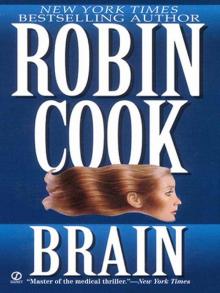 Brain
Brain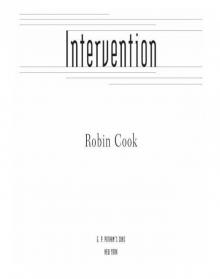 Intervention
Intervention Invasion
Invasion The Legend of Parzival: The Epic Story of His Quest for the Grail
The Legend of Parzival: The Epic Story of His Quest for the Grail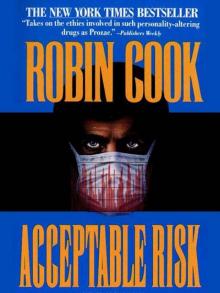 Acceptable Risk
Acceptable Risk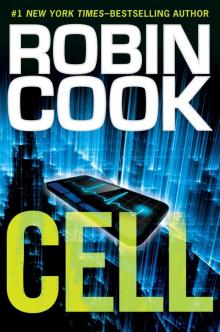 Cell
Cell Fever
Fever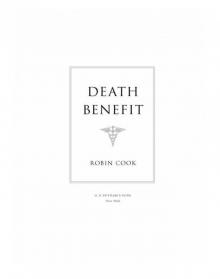 Death Benefit
Death Benefit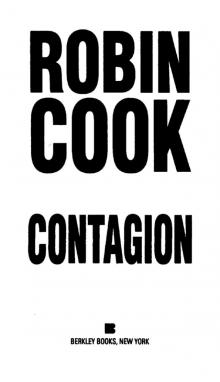 Contagion
Contagion Mindbend
Mindbend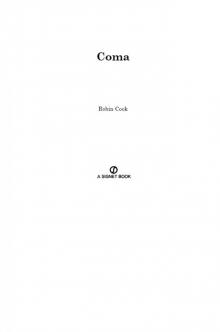 Coma
Coma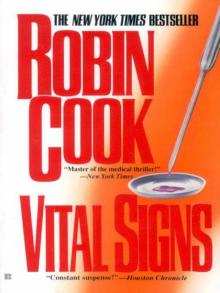 Vital Signs
Vital Signs Harmful Intent
Harmful Intent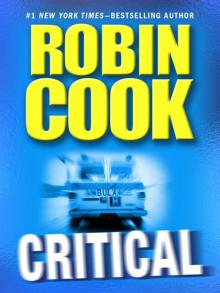 Critical
Critical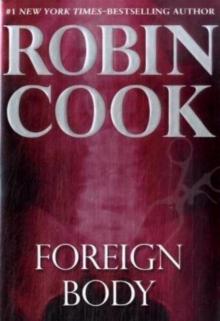 Foreign Body
Foreign Body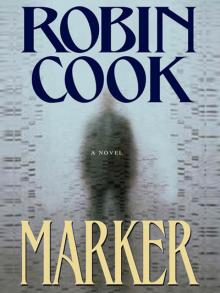 Marker
Marker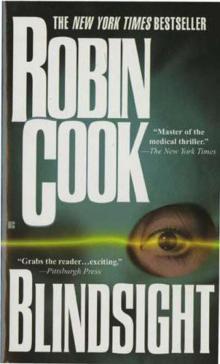 Blindsight
Blindsight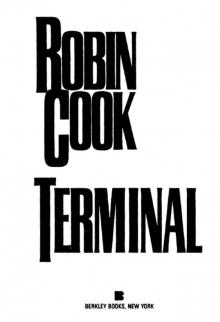 Terminal
Terminal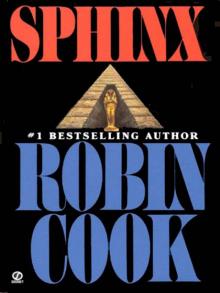 Sphinx
Sphinx Fatal Cure
Fatal Cure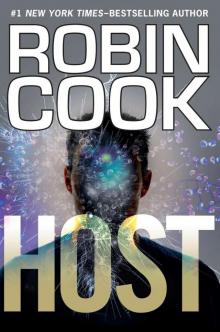 Host
Host Charlatans
Charlatans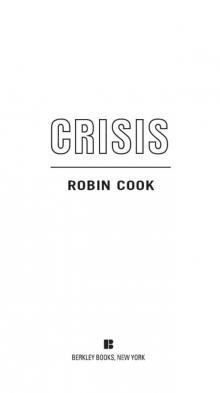 Crisis
Crisis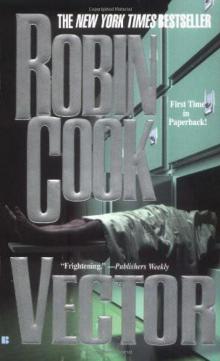 Vector
Vector Toxin
Toxin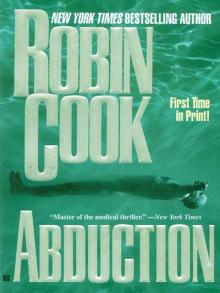 Abduction
Abduction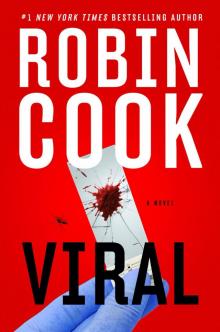 Viral
Viral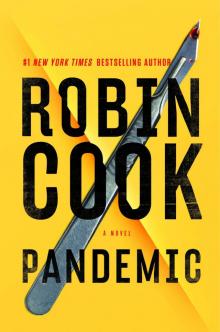 Pandemic
Pandemic Outbreak
Outbreak Vector js&lm-4
Vector js&lm-4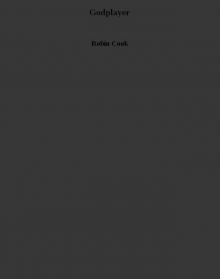 Godplayer
Godplayer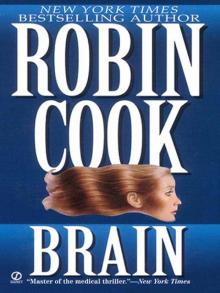 A Brain
A Brain Year of the Intern
Year of the Intern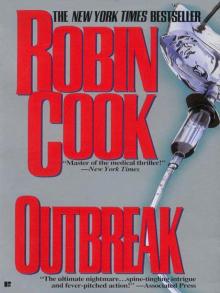 Outbreak dmb-1
Outbreak dmb-1 Cure
Cure Mortal Fear
Mortal Fear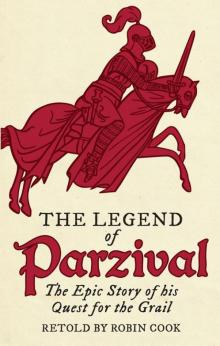 The Legend of Parzival
The Legend of Parzival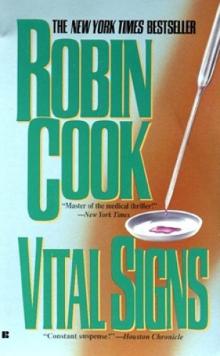 Vital Signs dmb-2
Vital Signs dmb-2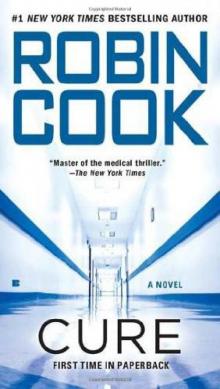 Cure (2010) sam-10
Cure (2010) sam-10 Blindsight sam-1
Blindsight sam-1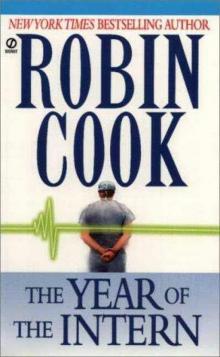 The Year of the Intern
The Year of the Intern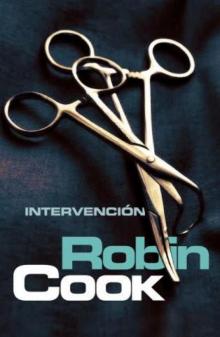 Intervention sam-9
Intervention sam-9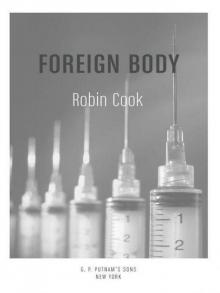 Foreign Body sam-8
Foreign Body sam-8